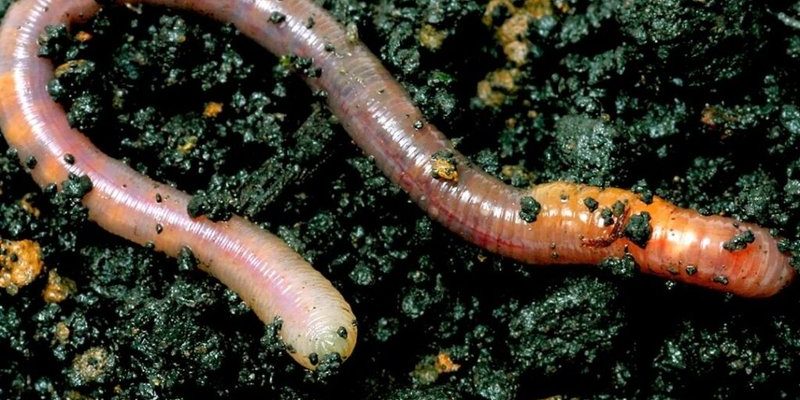
Now, let’s dive into how to collect earthworms the right way. We will cover practical methods, ethical considerations, and tips to ensure your worm-catching adventure is both effective and harmless. Grab your gloves and let’s get started!
Understanding Earthworms: Nature’s Little Helpers
Before we jump into collecting earthworms, let’s take a moment to understand why they’re so important. Earthworms are like tiny gardeners. They burrow through the soil, aerating it, which helps water and nutrients reach plants more effectively. They also break down organic material, turning it into nutrient-rich compost. This process is vital for maintaining healthy ecosystems, making earthworms essential to our environment.
You might be wondering about the different types of earthworms. While there are over 4,000 species worldwide, the most common types you’ll encounter are **Lumbricus terrestris**, the common earthworm, and **Eisenia fetida**, often called the red wiggler. The latter is popular among composters. Knowing which type you’re dealing with can help you understand their needs and behaviors better.
Now that we appreciate these little soil superheroes, let’s move on to how to collect them without harming them.
Choosing the Right Location
Finding the perfect spot to collect earthworms is just as important as the collection process itself. Earthworms thrive in moist, dark environments, like gardens, compost heaps, and damp grass areas. Avoid concrete or overly dry areas where worms are less likely to be found.
Here’s how to select a good location:
- Garden Beds: Look for well-maintained gardens, especially those with rich soil full of organic matter.
- Compost Areas: If you have a compost pile, check here first. Worms love this environment and will likely be plentiful.
- Moist Clearings: After a rain, a walk in a wooded area or a park can reveal earthworms on the surface as they come up for air.
Timing is also essential. Early morning or late evening is the best time to collect them, as earthworms tend to be more active during cooler hours.
Gathering Tools for Ethical Collection
You don’t need fancy equipment to collect earthworms, but a few simple tools can make the process smoother and more humane. Here’s what you should have on hand:
- Gloves: Protect your hands and keep the worms safe from oils or dirt.
- Small Trowel or Hand Spade: Perfect for digging gently into the soil.
- Container: A breathable box or bucket allows worms to stay safe while you gather them. Avoid airtight containers.
Consider bringing a small spray bottle filled with water to keep the worms moist during collection. Earthworms can dry out quickly, so a little mist can go a long way in ensuring their wellbeing.
Techniques for Collecting Earthworms
There are a couple of effective methods to collect earthworms while minimizing harm. Here’s a step-by-step guide for two popular techniques:
1. Digging Method
This is a straightforward technique and works well if you want to collect worms from soil directly.
1. Start by choosing a spot with moist, loose soil.
2. Use your trowel to gently dig up a small section of soil, about 6-12 inches deep.
3. As you dig, carefully sift through the soil with your fingers to find worms.
4. Place any worms you find into your container, ensuring they’re covered with a bit of soil for comfort.
2. The Water Method
This method is less invasive and often results in more worms coming to the surface.
1. Mix a solution of water with a small amount of dish soap. The soap helps to irritate the worms’ skin, prompting them to surface.
2. Pour the mixture over a small area of your chosen site.
3. Wait a few minutes, and you should see worms emerging from the soil.
4. Gently collect the worms from the surface with your hands or a small scoop and place them in your container.
Transporting Earthworms Safely
Now that you’ve gathered your earthworms, it’s crucial to transport them properly to minimize any stress. Here’s how to do it:
– Ensure your container has some soil and moisture. This keeps the worms comfortable during transit.
– Keep the container in a cool, dark place to avoid overheating.
– Avoid long distances or extended time outside the soil, as worms can dry out quickly.
If you can, try to conduct your studies as soon as possible. The longer earthworms are out of their natural environment, the more stress they face.
Studying Earthworms Responsibly
Once you’ve collected your earthworms, you might want to dig deeper into their habits or biology. Here are a few ethical guidelines to keep in mind:
– **Limit Collection:** Only take what you need for your study. Over-collecting can harm local populations.
– **Return Them:** If possible, make sure to return the worms to their original location after your experiment. It helps maintain the balance of the ecosystem.
– **Observe Carefully:** Use a gentle approach when handling earthworms. They are sensitive, and rough treatment can harm them.
You can also learn a lot by observing their behavior in a controlled environment, like a small terrarium, where you can provide the right conditions for their health.
Collecting earthworms for study can be both a fun and educational experience. By understanding their role in the environment and using ethical collection methods, you can gather these fascinating creatures without causing harm. Remember, everything from the tools you choose to how you transport and study them matters.
Next time you’re digging in the backyard or visiting a park, keep an eye out for these little soil engineers. They hold secrets to our ecosystem that are just waiting to be discovered. Happy worm hunting, and may your newfound knowledge of these tiny friends deepen your appreciation for nature!

